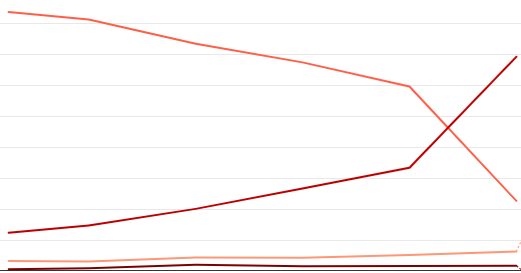It’s now been over three weeks since the ACT election, and I have pulled together the statistics on how the Covid-19 pandemic affected how people choose to vote.
There was a massive surge in pre-poll voting, necessitating a collapse in the election day vote. There was also a more modest increase in postal voting, on top of a record high postal vote in 2016.
This chart shows the share of the vote cast as an ordinary vote on election day, as a pre-poll vote, a postal vote, or other methods. I’ve calculated these figures as far back as the 2001 election – it was not possible to calculate these same statistics for 1995 and 1998 based on the data I could find on the Elections ACT website (let me know if I’ve missed it).
The trend was already heading in this direction before this year. Ordinary voting had declined from 83.8% in 2001 to 59.7% in 2016. Pre-poll voting had climbed from 12.4% to 33.4% over the same period. Postal voting was around 3% in the early 2000s, increasing to over 4% in 2008 and 2012, and then hitting a record level of 5.2% in 2016.
These figures were completely flipped on its head in 2020. 69.3% of votes were cast in person at pre-poll, with another 6.3% cast as a postal vote. That’s at least 75.6% of all votes cast before election day.
I’ve also pulled together statistics on turnout and informal rates, dating back to the first Hare-Clark election in 1995.
The informal rate has steadily been declining since the first Hare-Clark election. That first election saw an informal rate above 6%, but it dropped right down to 4.2% in 1998 and, apart from a much lower rate in 2004, it has steadily dropped since then.
Yet this year’s informal rate is remarkably low, falling to just 1.4%.
The likely explanation for this low rate is due to people voting electronically at pre-poll. Electronic voting has been used in the ACT since 2001, and it has been the default method of casting a pre-poll vote since at least 2008. The big increase in electronic voting has likely led to a big drop in informal voting.
I haven’t yet compiled the ACT 2020 data for my data repository. When I do so that will allow me to calculate the informal rates for each method of voting (and also calculate the partisan voting trends by method of voting), but I have looked at the breakdown in 2016. The informal rate for pre-poll voters was 1.9%, compared to 2.9% for all other votes.
Finally, I have also taken the opportunity to calculate the turnout rate since 1995.
The turnout rate has moved within a very narrow range, but 2020 was one of the lowest-turnout elections, in line with the last two elections. The 2016 election had a turnout of 88.5%, which was the lowest ever. 2012 and 2020 both had a turnout of 89.3%. This compares to turnouts of 93.9% in 1998 and 92.8% in 2004.
It is worth noting, however, that turnout has been calculated as a share of enrolment, not as a share of eligible residents. We know that enrolment rates have been increasing as a share of the eligible population at the federal level, and this presumably has flowed through to ACT elections. If enrolment rates have improved, you’d expect a decline in official turnout rates.
That’s it about the ACT for now. I will try to finish my ACT 2020 dataset before the end of the year, and I will return with an analysis of how voting patterns between the parties vary across the different voting methods. In the meantime the ACT 2016 dataset is available for free in my data repository and ACT 2012 is available for Patreon donors who give $5 USD or more per month.



